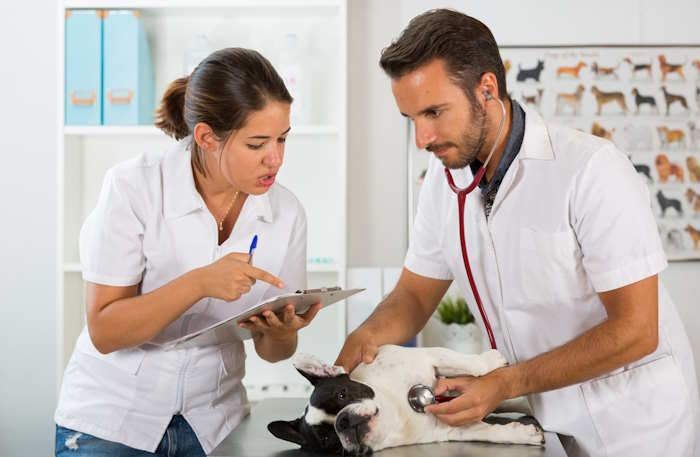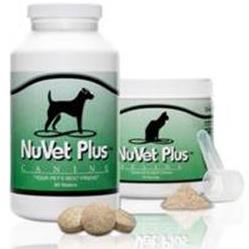- Small Dog Place Home
- Health
- Common Health Concerns of Small Dogs
Common Health Concerns of Small Dogs
Health Concerns of Small Dogs
As a result of their petite stature and huge personality, small dog breeds are popular among many pet owners. However, they’re vulnerable to some health issues that typically affect small breeds.
As a noble pet parent, you want to be ready for all that comes with your bundle of joy in order to know what to anticipate if something goes wrong.

Being familiar with the most common health problems in small dog breeds will help you better understand your little puppy.
Regular check ups with the vet will aid in early detection and provide you with a plan for monitoring and care.
Below, we go through some common health conditions for small dogs that you should be aware of.
How to Help Dogs with Amputated Legs
Losing a limb can be a daunting experience for dogs, affecting their mobility and confidence. However, advancements in veterinary medicine and technology have provided assistive devices that offer a lifeline to dogs with limb issues, helping them regain independence.
More information about Dogs with Amputated Legs
Brachycephalic Airway Syndrome
Brachycephalic Airway Syndrome is caused by the length of the skull bones being cut down. Soft tissue changes result in abnormally tiny or narrow nasal passages. Airflow into the nostrils is occasionally obstructed by constriction.
While not restricted to small dogs, the majority of affected dogs usually breathe more freely through their mouths than through their nostrils. A physical examination performed by a qualified veterinarian is the most effective technique to diagnose this condition.
Clinical Signs
● Exercise intolerance
● Gagging
● Noisy breathing
● Snoring
Treatment
By limiting exercise levels and avoiding humid weather, the condition may subside. Nonsteroidal anti-inflammatory medications can provide temporary relief.
When a dog's respiration is hindered by anatomical anomalies, surgery is frequently the best option. By surgically removing a wedge of tissue from the nostrils, stenotic nares can be repaired to improve airflow through the nostrils.
The dog will be able to sustain health and fitness activities better than usual and become tolerant of high temperatures.
More information about Brachycephalic Airway Syndrome
Degenerative Mitral Valve Disease
Degenerative Mitral Valve Disease is a common heart illness. Degenerative modifications to the mitral valve include thickening and irregular rhythms.
This typically results in congestive heart failure because the organ slips or shifts out of position. Only a stethoscope can examine the function of the heart muscle pumping and detect whether other valves are compromised, and whether the heart is enlarged.
The degree of cardiac enlargement may be seen on chest X-rays.
Clinical Signs
● Difficulty breathing and coughing
● Increased respiratory rate
● Panting
● Weight loss
● Weakness and collapse
Treatment
Mild disease without heart enlargement is normally examined frequently to reduce the likelihood of it becoming severe. To delay disease development, dogs with heart enlargement are given Pimobendan, angiotensin-converting enzyme inhibitors, or furosemide. In more severe cases, hospitalization for primary heart failure will be advised.
Dental Disease
Dental disease is commonly referred to as Periodontal disease (Periodontitis). Inflammation occurs from dental plaque and tartar building up on the teeth.
The immune system will start battling this bacterial accumulation, leading to swollen gums and more explicit symptoms.
In addition to tooth loss, this condition can cause other major health issues. The frame that supports the teeth can also deteriorate or disappear. Poor nutrition may result in the probability of your dog developing periodontal disease.
Clinical Signs
● Bleeding gums
● Broken or missing teeth
● Excessive drooling
● Difficulty chewing tough food or treats
Treatment
The extent of your dog’s periodontitis will determine the course of treatment. There’s a lot of dog food, dental chews, and chew toys made expressly to treat dental problems. However, they don’t form part of a cure.
Scaling the teeth above and below the gum line will be necessary to eliminate plaque and tartar if the problem is in its early stages. A more serious illness will call for more sophisticated restorative techniques or extraction.
Learn more about dental health
Ectropion
Ectropion is a condition in which the eyelids roll outward. Your dog may be having ectropion if you observe that their eyes are drooping or rolling outward. This illness is frequently hereditary. Usually, the pink on the inside of their eyelids is visible.
Clinical Signs
● Eyes are noticeably redder than normal
● Irrational blinking
● Ocular tissues are visible since the eyelid is open.
● Squinting
● They develop a discharge around their eyes.
● Watery eyes
Treatment
Some conditions are minor and treatable without surgical repair. It could be advised to use an ocular lubricant to protect the eye tissues. Surgery is the only option for treating severe ectropion.
In order to minimize drooping and gaping and to make the lower eyelid “fit” better against the eyeball, a surgical operation is performed to shorten the lower eyelid.
Intervertebral Disk Disease
The spinal cord of your dog is affected by Intervertebral Disc Disease (IVDD), which results in a number of excruciating movement problems. It’s age-related and frequently goes unnoticed. Early intervention is important to prevent IVDD from causing irreversible damage to your dog's spine. IVDD may be quite painful for dogs.
Clinical Signs
● Inability to walk normally
● Head held low
● Inability to support their own weight
● Pain and difficulty jumping
Treatment
For mild-to-moderate IVDD damage, anti-inflammatory medications may be suggested as a treatment. Surgery is the greatest solution for dogs that are experiencing more serious conditions. Physical therapy is also ideal for muscle strengthening.
Pancreatitis
Pancreatitis is a condition that affects a major organ in the abdomen. This condition can be acute or chronic, and it can manifest in a variety of ways. When the pancreas gets inflamed, other organs fail.
Dogs that consume high-fat meals or who frequent the garbage might be vulnerable to pancreatitis. Pancreatitis must be diagnosed by taking your dog to the veterinarian. It’s critical to get it diagnosed as early as possible.
Clinical Signs
● Abdominal pain
● Diarrhea
● Loss of appetite
● Severe dehydration
● Vomiting
Treatment
At the first signs of symptoms, it would be ideal to treat the symptoms and change your dog’s diet.
Patellar Luxation
Patellar Luxation is a frequent orthopedic ailment that describes a dislocated kneecap. When the knee flexes, the kneecap pops out and changes direction from the femoral groove, causing Patellar luxation.
Luxation results in knee dislocation on one or both sides. Patellar Luxation is frequently caused by hereditary factors in dogs.
Clinical Signs
● Kicking or shaking the limb
● The dog will miss a few steps or skip along the way then resume walking normally
Treatment
The dog can either be put on joint supplements or pain medications, such as nonsteroidal anti-inflammatories. Physical rehabilitation can also help with some kind of pain relief.
Tracheal Collapse
The windpipe is affected by Tracheal Collapse. When the trachea weakens, the airway narrows, making breathing harder. When a dog is born with weak tracheal cartilage, it’s more prone to tracheal collapse in the long term. Unfortunately, once your dog has been diagnosed, there are additional risk factors that accompany tracheal collapse.
Clinical Signs
● Abnormal breathing sounds
● Bluish tinge to the gums
● Difficulty breathing
● Fainting
● Low energy
● Rapid breathing
Treatment
To minimize inflammation in the windpipe, anti-inflammatory medicines such as prednisone or fluticasone may be administered.
To relieve the discomfort and inflammation caused by coughing, liquid cough suppressants such as butorphanol or hydrocodone may be administered.
These medications and supplements may be recommended to widen the airways in the lungs, allowing more oxygen to enter the circulation. Tracheal collapse in severe cases may require surgery to keep the windpipe open.
Final Thoughts
Keeping your little dog healthy and happy is important. You should ensure that your dog is fed high-quality pet food and receives enough water. Know your dog well and make sure it receives regular exercise and health care according to its breed and special needs.
About Janice (author and voice behind this site)
Having lived with dogs and cats most of her life, Janice served as a veterinary technician for ten years in Maryland and twelve years as a Shih Tzu dog breeder in Ohio.
Her education includes undergraduate degrees in Psychology with a minor in biology, Early Childhood Education, and Nursing, and a master's in Mental Health Counseling.
She is a lifelong learner, a dog lover, and passionate about the welfare of animals. Her favorite breed for over 50 years has been the Shih Tzu, but she has also lived with Poodles, Maltese, Yorkshire Terriers, Beagles, English Bulldogs, Carin Terriers, and a Cocker Spaniel.
When not writing, reading, and researching dog-related topics, she likes to spend time with her eight Shih Tzu dogs, husband, and family, as well as knitting and crocheting. She is also the voice behind Miracle Shih Tzu and Smart-Knit-Crocheting
Does This Article Deserve Your Thumbs Up?
We always appreciate your support and encouragement. Your thumbs up means so much to us. Please like this article.
If you find this page or any page on Small Dog Place Helpful, or useful in anyway, I'd love it if you would click the small heart found on the bottom right of each page.
You can also share or bookmark this page -- just click on the:
Your second block of text...

Free Monthly Newsletter
Sign Up for Our Free Newsletter and get our Free Gift to You.
my E-book, The Top 10 Mistakes People Make When Choosing a Dog (and how to avoid them)

